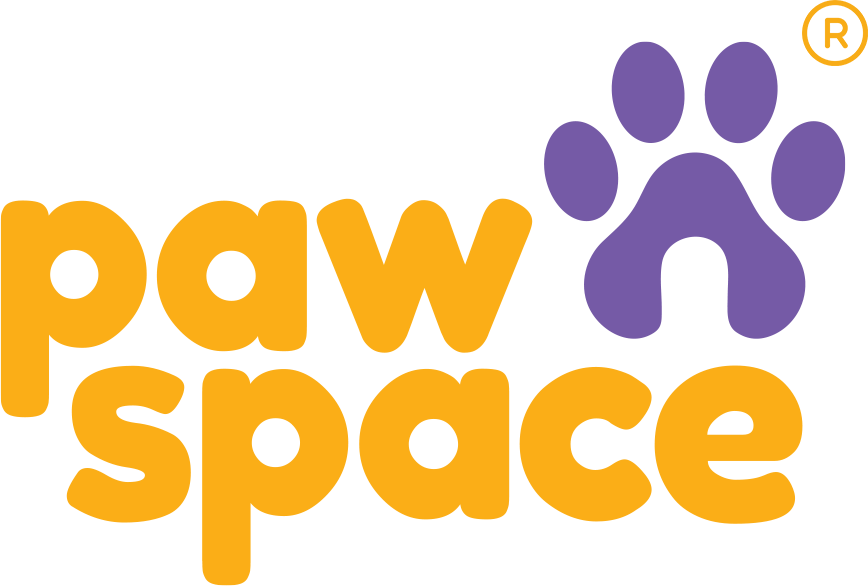Rottweiler
Rottweilers originated in ancient Rome as herding and guard dogs, later used in Rottweil for cattle herding. They are intelligent, strong, and highly trainable but can show aggression without proper socialization. Loyal and protective, they require consistent training and plenty of exercise. Due to their high energy, Rottweilers are not ideal for apartment living unless given enough outdoor activity to prevent restlessness.

Male
Ideal height: 60 - 68cm Ideal weight: 40 - 60kg

Female
Ideal height: 55 - 65cm Ideal weight: 35 - 50kg
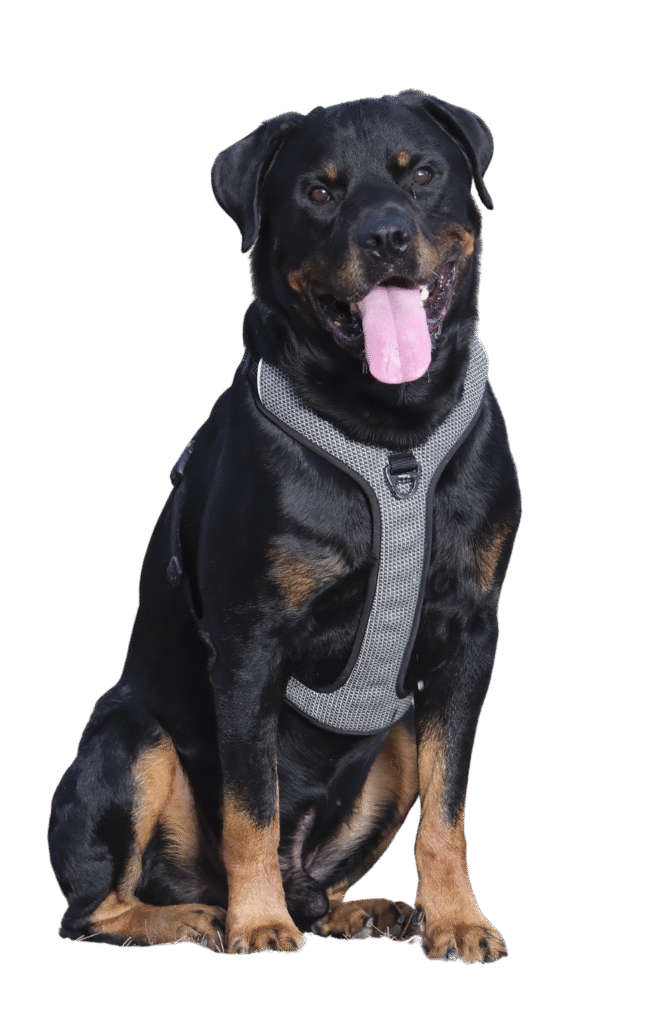
Size
Large
Life Span
8 – 10 – Years
Coat
Color
Medium
Traits & Characteristics
80%
80%
100%
100%
80%

Heat Tolerance
upto 27° C

Cold Tolerance
Upto -6° C

Best Diet for Rottweiler

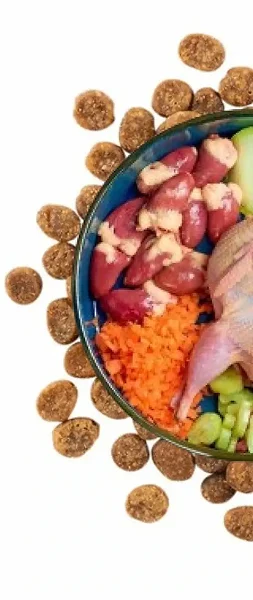
Carbohydrates
30 – 50%
Protein
20 – 30%
Fats
8 – 16%
Essentials, Vitamins & Minerals
6 – 8%
Fiber
2 – 4%
Total Kcal
1,000 – 1,500
Must have meal for a Rottweiler
Rottweilers require a balanced diet that supports their large, muscular build and high energy levels. Typically, they should be fed two meals a day, with high-quality protein as a key component. However, excessive protein without sufficient physical exercise can put strain on their kidneys, leading to potential kidney issues over time. Regular exercise is essential to help metabolize the protein properly and maintain overall health. A balanced diet with proper portion control and regular activity is crucial for their well-being.
🐾 Try Our Rottweiler Fresh Food!
Wholesome, freshly cooked meals crafted for your Rottweiler health and happiness.
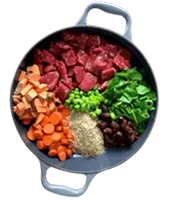
Book a Dog Diet Consultation
Get personalized diet advice for your Rottweiler for Absolutely FREE
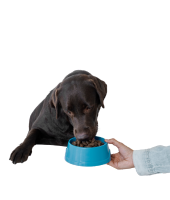
Rottweiler Diet
Opting for fresh meals ensures your Rottweiler gets natural, nutrient-rich food that supports healthy growth, strong bones, and a shiny coat. Rottweilers are a large, powerful breed prone to specific joint and digestive issues, so balanced meals with controlled portions are key to keeping them fit and active. Fresh meals are easier to digest than dry kibble and help your Rottweiler stay energetic and happy every day.
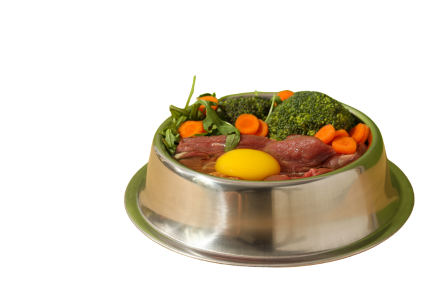
Protein Based Diet
Rottweilers thrive on a protein-rich, fresh diet that keeps their muscles strong, coat glossy, and digestion smooth. Vegetables like sweet potato, pumpkin, carrots, and spinach provide fiber and essential vitamins, while lean proteins such as chicken, lamb, or fish supply high-quality protein and omega-3s.
Simple meals like chicken with rice and veggies, or fish with quinoa and spinach, support Rottweilers’ high energy needs. A touch of olive oil or fish oil is great for their joint and coat health.
❌ Avoid harmful foods: onion, garlic, grapes, raisins, avocado, chocolate, excess salt, and oily/fried foods.
WEIGHT, STRENGTH AND GUT CONSIDERATE DIET
Rottweilers are prone to bloat and are susceptible to weight gain, so a balanced, portion-controlled diet is very important. Fiber-rich foods like pumpkin, carrots, and beans support digestion, while lean proteins such as chicken and fish keep muscles strong without adding excess calories.
Due to their predisposition to hip and elbow dysplasia, a diet rich in supplements like glucosamine and chondroitin is crucial for joint health. Omega-3 fatty acids from fish oil also help reduce inflammation.
Consider Their Age
Just like humans, a Labrador’s diet changes as they grow:
🐾 Puppies (6–12 months): Need protein-rich, calorie-dense meals to support fast growth, strong bones, and immunity.
🐾 Adults (1–7 years): Require balanced diets with lean protein, healthy fats, and controlled calories to fuel energy and maintain muscle.
🐾 Seniors (7+ years): Benefit from lighter, easily digestible protein, more fiber, joint-support nutrients like glucosamine, and antioxidants to slow aging.

Apple
Provide fiber and vitamins; ensure seeds and core are removed.

Carrot
Crunchy and rich in vitamins; supports dental health and is low in calories.
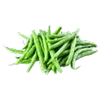
Green Beans
Low in calories and high in fiber, aiding digestion and keeping them full.

Sweet Potato
Nutrient-dense with fiber, helping digestion and providing essential vitamins.
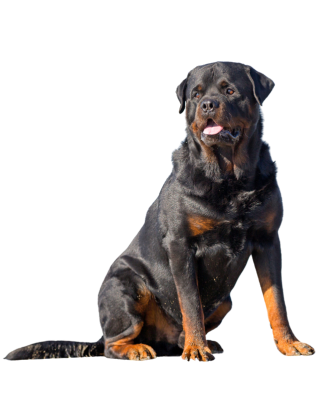
Training Needs for Rottweiler
Rottweilers are highly intelligent, loyal, and confident, which makes them excellent working dogs. Their powerful and assertive nature, however, requires an experienced and consistent handler to prevent behavioral issues and ensure proper socialization.
With consistent training, positive reinforcement, and early socialization, Rottweilers quickly learn commands and good manners. They are powerful and energetic, thriving on daily exercise and mental stimulation like obedience training, agility, or advanced scent work. A mix of mental and physical activity keeps Rottweilers happy, healthy, and well-behaved, preventing boredom-related mischief.

Puppy Stage (2–6 months)
Rottweiler puppies are intelligent, strong-willed, and fast learners, but without proper direction they can quickly pick up unwanted habits. At this stage, training should primarily focus on toilet training and house manners. Teaching them where and when to relieve themselves, managing crate training, and setting clear household rules helps prevent accidents and destructive behaviors like chewing or biting. Since Rottweilers grow rapidly and can be strong even as puppies, establishing calm routines and early boundaries is essential to raise a disciplined and well-adjusted dog.
Suggested Package: 8 Sessions

Adolescent Stage (6–18 months)
During adolescence, Rottweilers begin testing limits and showing their natural strength and confidence. This stage requires a combination of toilet and house training reinforcement, along with obedience work to ensure they remain manageable as they grow larger and more powerful. Commands such as Sit, Stay, Come, Down, and Leave It are taught consistently with positive reinforcement to build reliability. This is also the right time to address behaviors like jumping, nipping, or over-excitement around people. A structured 12-session plan ensures your Rottweiler develops the right balance of discipline and responsiveness, preventing them from becoming dominant or difficult to control later.
Suggested Package: 12 Sessions

Adult Stage (1.5 years +)
An adult Rottweiler is strong, alert, and highly intelligent, making proper training non-negotiable for safety and harmony at home. The perfect 16-session plan covers everything — toilet and home manners, obedience, and most importantly, leash walking and control. Rottweilers are powerful dogs that can easily overpower their owners if not leash-trained properly. Focus at this stage includes advanced commands, loose-leash walking, impulse control around distractions, and recall training. Social manners with children, strangers, and other pets are reinforced, while structured exercise and mental stimulation ensure your Rottweiler remains obedient, calm, and confident. With the right training, they become loyal, protective, and exceptionally well-behaved family companions.
Suggested Package: 16 Sessions
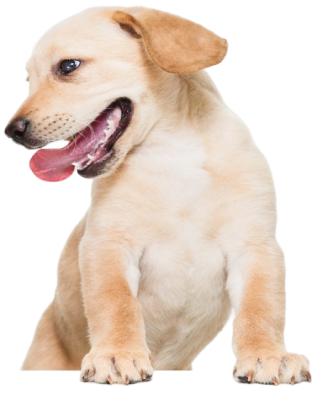
Dog Training: Expert Guidance at Home
Turn your pup into a well-mannered pro—where training meets success

Vet Visits

Puppyhood (0-1 Year):

Every 3-4 weeks until 16 weeks, then every 6-12 months.

Vaccinations, parasite control, neutering, and behavior guidance.
Adulthood (1-6 Years):

Annual check-ups.

Vaccine boosters, dental care, diet, exercising, weight management.
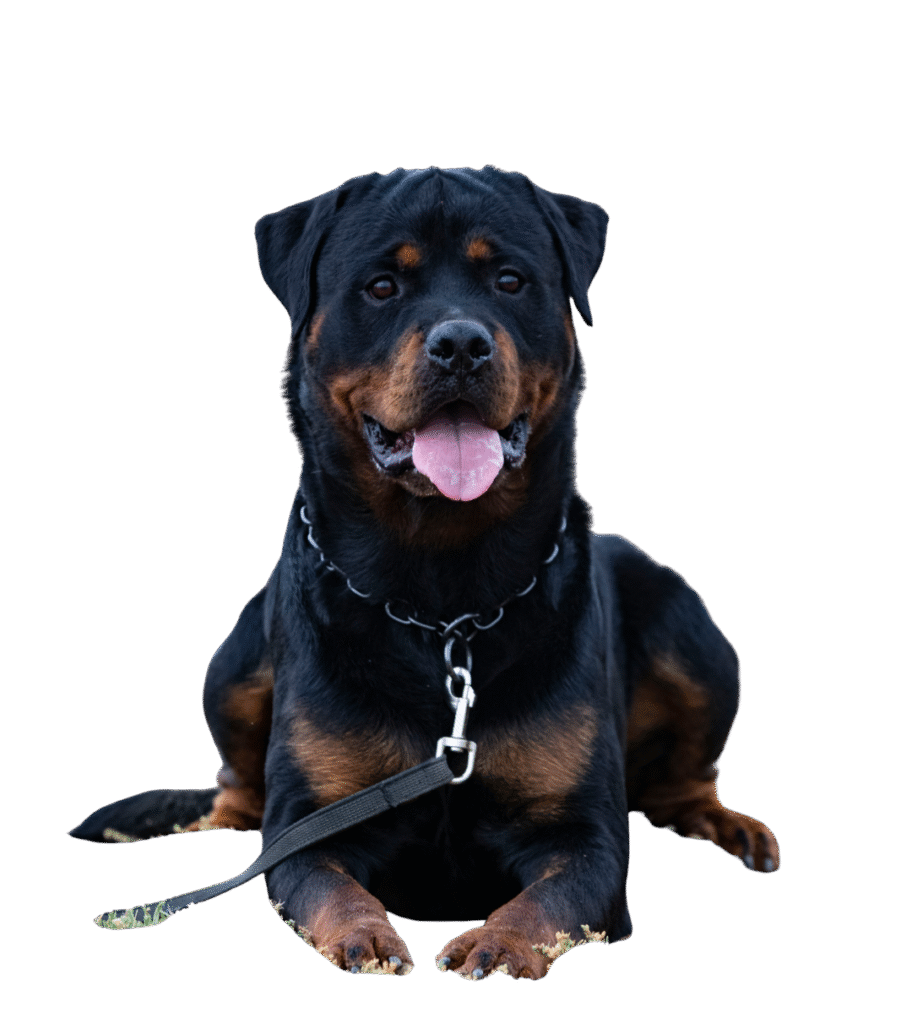
Mature adulthood (7-9 Years):

Annual or bi-annual visits.

Senior screenings, joint health, vision and hearing checks, and diet adjustments.
Senior years (10+ Years):

Bi-annual visits or more.

Comprehensive exams, pain management, cancer screening, quality of life, and senior nutrition.
Vaccination Schedule

First
6-8 week
Second
10-12 week
Third
14-16 week
Regular
Yearly once
Grooming
Rottweilers have a short, coarse, double coat that is relatively low-maintenance but sheds regularly. They should be brushed weekly to remove loose hair and dirt. Bathe them every 6-8 weeks, or as needed, to keep their coat clean.
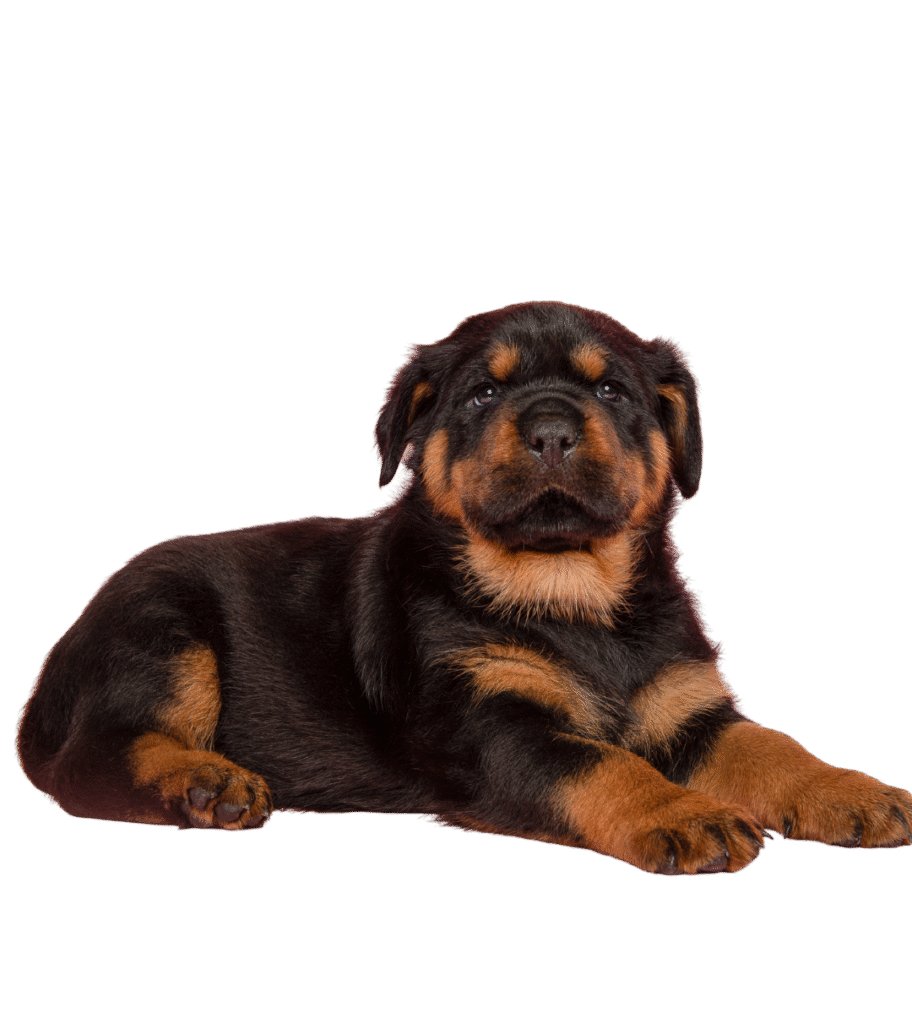
Brush & Bath guide
Rottweilers should be brushed weekly to keep their coat healthy and reduce shedding. They typically need a bath every 6-8 weeks to maintain cleanliness. A good bath helps keep their coat healthy and reduces excess hair around the home.
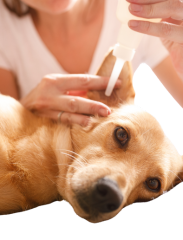
Ear Cleaning
Rottweilers should have their ears checked and cleaned about once a week to prevent infections. Use a vet-recommended ear cleaner and a cotton ball to gently wipe the outer ear. Regular checks help maintain overall ear health.
Nail clipping & Paw care
Rottweilers should have their nails checked and clipped regularly—typically every 3 to 4 weeks. Their active lifestyle can help wear down the nails, but a regular clipping routine is important to prevent overgrowth which can cause pain and difficulty walking. Regular checks of their paw pads for cuts or irritation are also recommended.
Period Care
During her period, use doggy diapers, provide comfort, and monitor her health. Keep her calm with extra attention and gentle care to ensure she feels secure.
Dental Care
Rottweilers need regular dental care, including brushing their teeth 2 to 3 times a week to prevent plaque buildup and dental disease. Additionally, provide dental chews and schedule annual vet check-ups to maintain oral health.
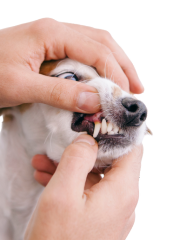
Give Your Rottweiler a Spa Day at Home!
👉 Regular grooming not only keeps shedding under control but also prevents skin infections and keeps your pup comfortable year-round.
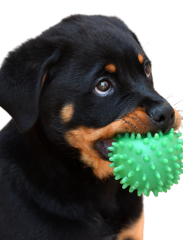

Health Conditions for Rottweiler

Elbow Dysplasia
Similar to hip dysplasia, this genetic condition affects the elbow joint, causing pain and arthritis.
Symptoms:
Front leg lameness and reduced range of motion.
How to avoid:
Prevent by choosing breeders who test for this condition and managing your dog’s weight.
Cancer
Rottweilers are prone to various cancers, such as osteosarcoma and lymphoma.
Symptoms:
Symptoms vary depending on the type but can include lumps, swelling, or unexplained weight loss.
How to avoid:
Early detection through regular vet exams and maintaining overall health can help manage risks.

Cardiomyopathy
A heart condition that affects the heart muscle, leading to heart failure.
Symptoms:
Coughing, difficulty breathing, and lethargy
How to avoid:
Regular vet check-ups can help detect this early; maintaining a healthy weight and diet also helps.
Hip Dysplasia
It’s a genetic condition where the hip joint doesn’t fit into the hip socket properly, leading to arthritis and pain.
Symptoms:
limping, difficulty rising, reluctance to exercise, and a ‘bunny hopping’ gait.
How to avoid:
Keeping your Labrador at a healthy weight and providing joint supplements may help.
Frequently Asked Questions
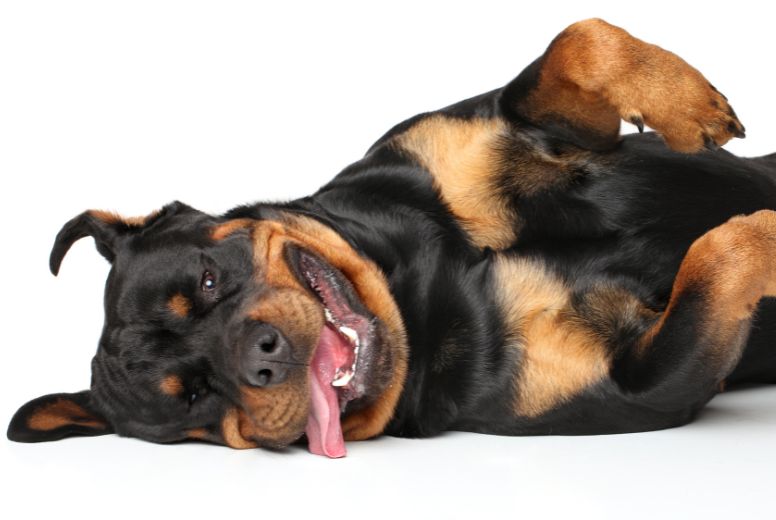
Rottweilers are ideal if you want a loyal, strong, and protective companion. They excel as family pets, guard dogs, and working dogs. This breed thrives with consistent training, daily exercise, and mental stimulation. They are best suited for owners who can commit to early socialization, discipline, and handling their size and strength responsibly. With proper care, Rottweilers are affectionate, confident, and highly rewarding pets.
Rottweiler puppies are intelligent and energetic. Early socialization, structured routines, and toilet training are essential to raise a balanced, confident adult dog. Introduce them to different people, pets, and environments to prevent aggression or fear-based behavior later.
Take your puppy outside after meals, naps, and playtime. Reward immediately when they eliminate in the correct spot. Follow this 90-day toilet training schedule:
Week 1–2: Take outside every 2 hours and after meals. Praise and reward.
Week 3–6: Extend intervals to 3–4 hours, monitor consistency.
Week 7–12: Encourage longer outdoor intervals, introduce commands like “Go potty,” and supervise indoors to prevent accidents.
Rottweilers need 60–90 minutes of daily exercise, split into 2 walks per day for adults. Puppies need shorter, frequent walks to protect growing joints. Include play and mental stimulation to maintain fitness and prevent boredom.
Feed a large-breed puppy diet with high protein and moderate carbs to support muscle and bone growth. Include supplements like calcium, glucosamine, and omega-3 fatty acids for joint health. Adult Rottweilers benefit from balanced diets with nutrients for bone and heart health, especially after 5 years. Avoid overfeeding to prevent obesity and joint issues.
Brushing: 2–3 times a week; daily during heavy shedding.Bathing: Every 4–6 weeks with mild shampoo.Trimming: As needed, mainly around paws and sanitary areas.Nail care: Trim every 3–4 weeks.This routine keeps their short coat shiny, healthy, and clean while controlling shedding.

